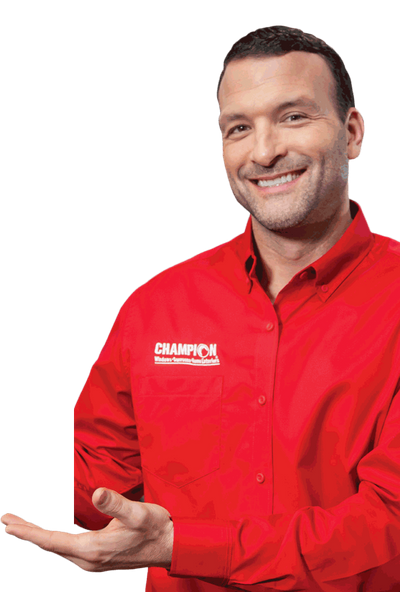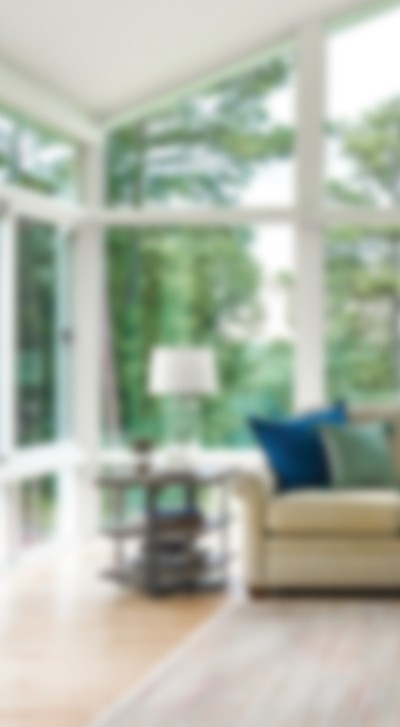


Expert Overview
- Sunrooms feature tempered glass in the windows because it’s safer and stronger than standard glass.
- Double pane glass with Low-E coating helps insulate a sunroom, especially if the space between the panes is filled with gas.
- For sunrooms that need the maximum insulation (such as sunrooms in climates with extreme heat or cold), homeowners can choose triple pane glass.
The vinyl windows you choose for your sunroom addition can have a big impact on how the sunroom looks and feels. The type of glass you specify will affect comfort, too.
Not all window glass is created equal. And for sunrooms, which are made mostly of windows, the glass you choose is especially important. When trying to decide what type of glass to use for the windows in your sunroom, consider two factors: energy efficiency and safety.
First, let’s talk about which type of window glass is the safest for sunrooms.
Float glass versus tempered glass
Standard glass, called “float glass,” is fragile, brittle, and allows heat from the sun to pass through it and warm up the space. When broken, float glass breaks into small shards and splinters that can penetrate the skin and create injury or bodily harm. This is why float glass is no longer used in sunroom windows. Instead, we use tempered glass, which is specially formulated to be safer and more energy efficient.
Tempered glass breaks into small chunks, not small shards. This is the same type of glass found in shower doors and passenger side car windows, because when it breaks it does not cause harm. Tempered glass is also stronger than standard glass, and is less likely to break due to strong impact.
Glass and energy efficiency
The type of glass you choose depends on the location of the sunroom, your local climate, your budget, and how you intend to use the sunroom. For example, if you plan to use the sunroom as a living space and a family room all year-round, you may opt for more energy-efficient glass than if you have a tight budget and are planning to use the sunroom three seasons out of the year.
Let’s review the different energy-efficient glass options.
Low-E coating
There are three types of light that penetrate glass: visible light, ultraviolet light, and infrared light.
Visible light brightens the space, while ultraviolet light and infrared light can make the room uncomfortably warm. Low-E coating is designed to allow visible light to pass through, while deflecting ultraviolet and infrared light. In the winter, Low-E coating prevents heat from escaping the home. During the summer, Low-E coating prevents sunlight from heating up the home.
Low-E coating also prevents sunlight from fading upholstery, clothes and artwork placed in the sunroom. Ultraviolet light can do a great deal of damage to objects and products placed in the room, so Low-E coating can save homeowners a lot of money over time.
Double paned glass
Double paned glass, also known as double-glazed glass, is insulated from outside temperatures. Double paned glass may have either gas or air in between the two panes. Gas is better, because double paned glass filled with air doesn’t insulate as well.
There are two types of gas that window makers generally use to fill their windows: argon and krypton. Both gases are colorless, odorless and non-toxic. Argon is more common because it is more affordable. Krypton is a better insulator, but is also more expensive. Double paned windows can expect energy savings of up to 31%1, depending on the features and quality of the window.
Triple paned glass
Triple paned glass (also known as triple glazed glass) is sometimes thought to be more energy efficient because it has an additional pane. However, if constructed properly with argon gas and Low-E coating, double pane glass is just as efficient. Triple pane glass is also less commonly used in sunrooms because it's heavy, thick and costly.
For a homeowner in an extreme climate who plans to use their sunroom over all four seasons, triple paned glass is a sensible way to insulate the space inside a sunroom. For a homeowner in a mild climate, double paned glass may be adequate to keep the sunroom comfortable.
Tinted glass
Tinted glass has many of the heat-reducing benefits of Low-E coating, but it also dims the light that comes into the sunroom. This is helpful in sunrooms where people intend to watch television, because it reduces glare. Tint coatings also help strengthen the glass and make it more shatter resistant.
1 https://www.energystar.gov/products/building_products/residential_windows_doors_and_skylights/benefits

